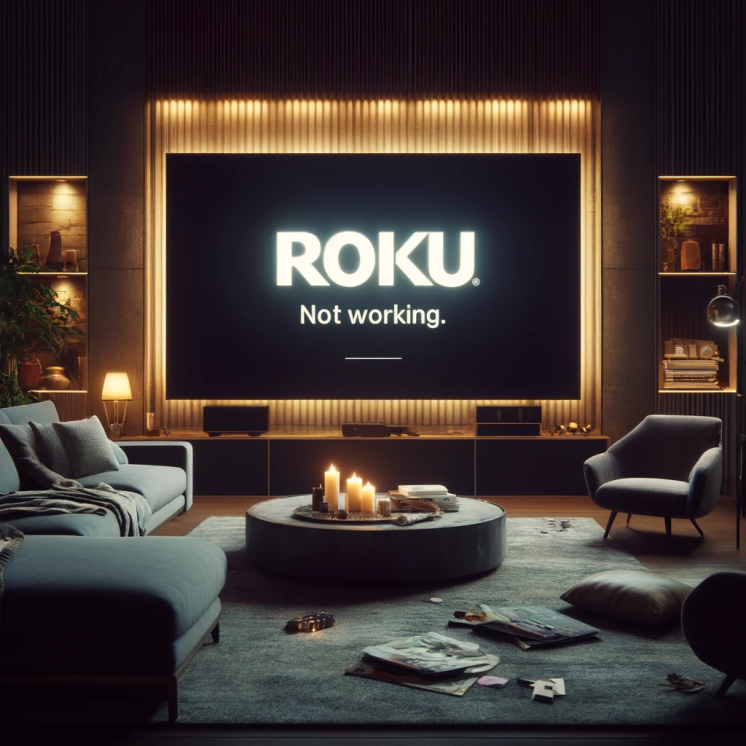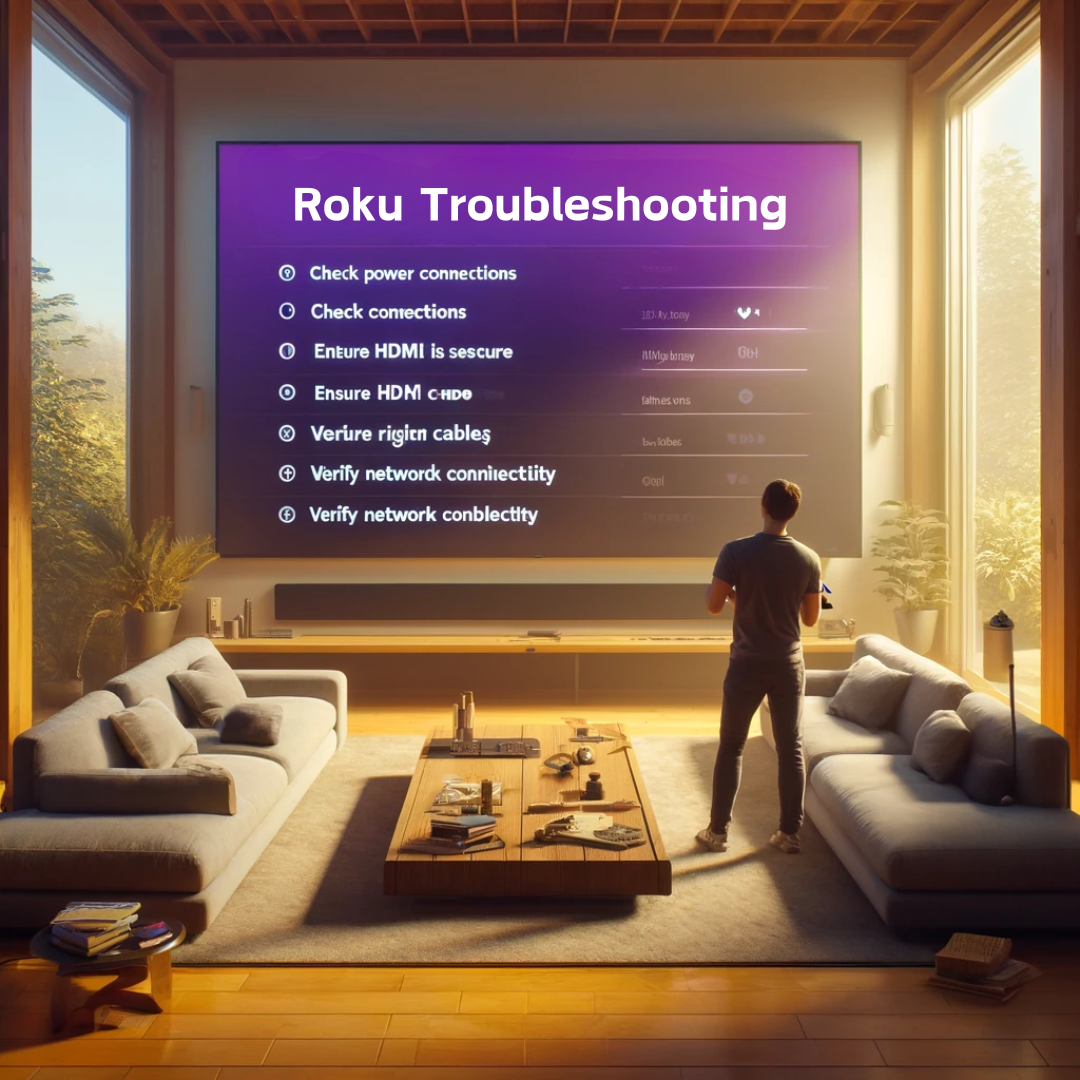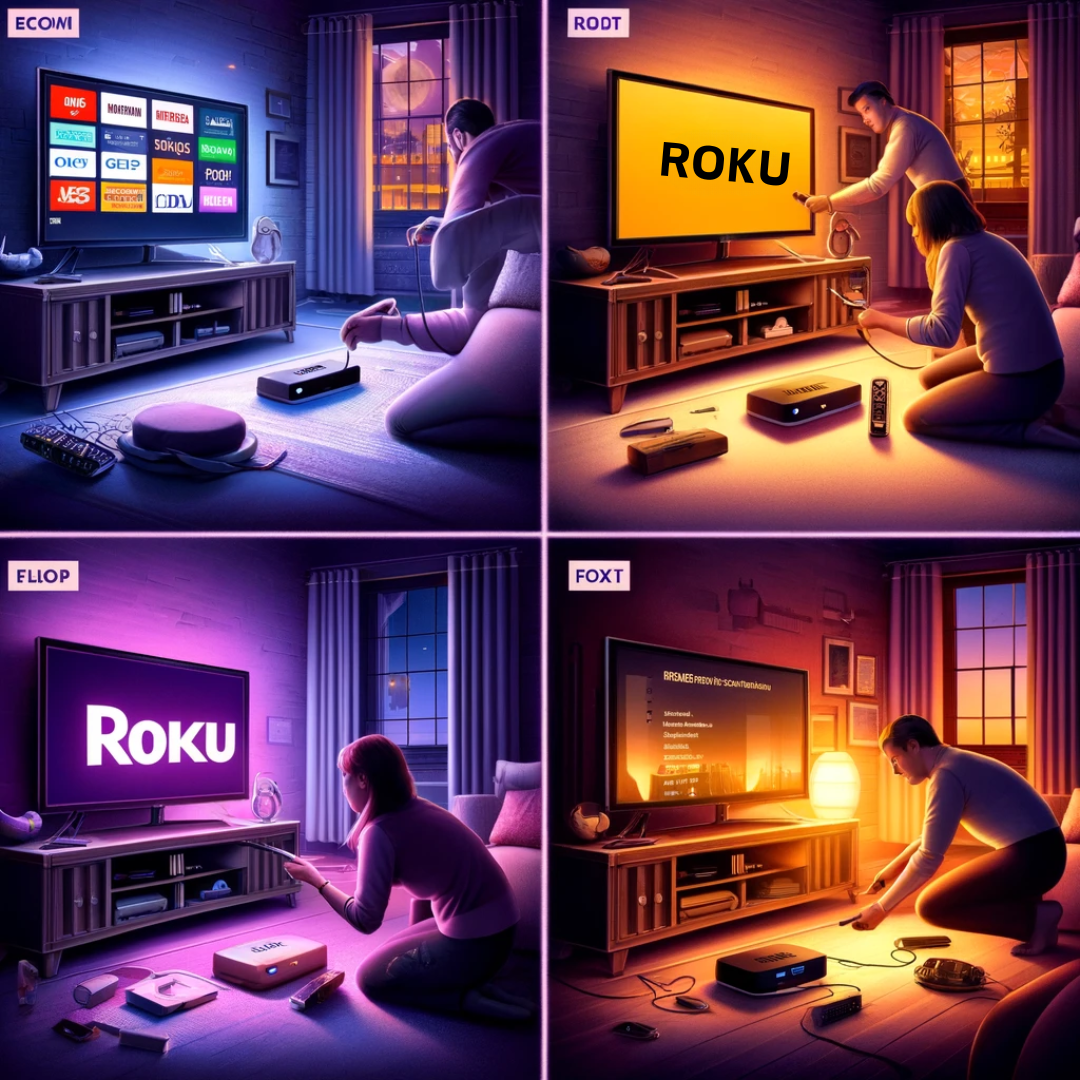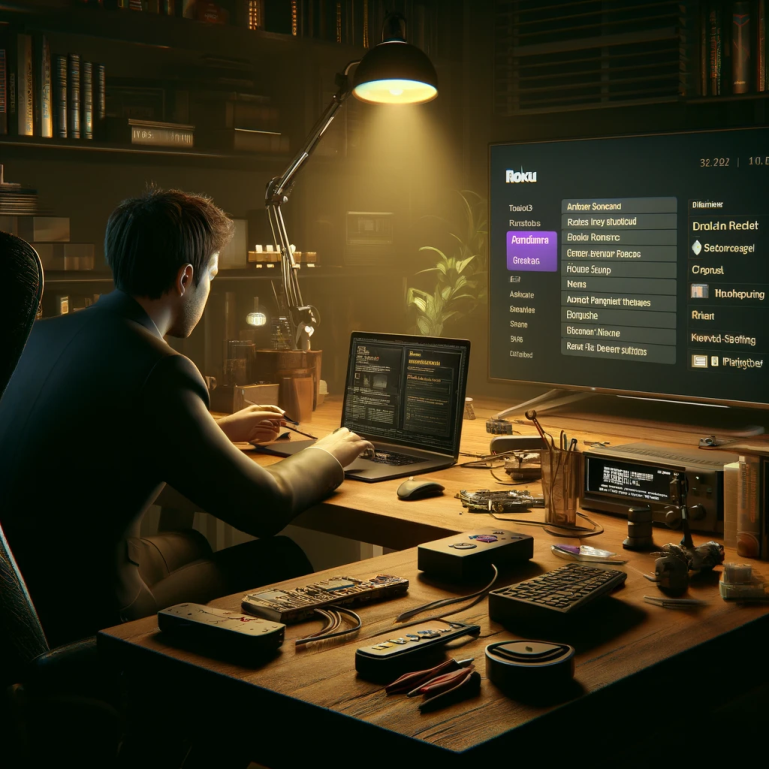Roku Not Working
Roku has established itself as a frontrunner in the streaming device industry, offering users a seamless way to access a variety of content including movies and TV shows to live sports and news. However, like any technology, Roku devices are not immune to issues. Many users find themselves pondering, Why is Roku not working? This question can arise from various challenges, from connectivity problems to hardware malfunctions.
One of the most common concerns users encounter is the dreaded scenario where their Roku device does not work. This can manifest in several ways: perhaps your Roku device refuses to turn on, fails to connect to the internet, or doesn’t stream content as smoothly as it should. Such problems can be frustrating, especially when you’re looking forward to unwinding with your favorite show or movie.
Understanding the common reasons why your Roku does not work is the first step towards finding a solution. It could be as simple as checking your internet connection, ensuring your device’s software is up to date, or performing a system restart. In many cases, these initial checks can quickly bring your Roku device back to life.
In this guide, we’ll explore various troubleshooting methods to help you resolve common Roku issues. From connectivity to audio problems, we’ll provide step-by-step instructions to get your Roku device up and running again. Remember, most Roku challenges are surmountable, and with a little patience and some simple fixes, you’ll be back to streaming in no time.
Preliminary Checks Before Roku Troubleshooting
Before diving into Roku troubleshooting, it’s important to perform some preliminary checks to ensure a smooth resolution process. These initial steps can often resolve common issues without the need for more complex troubleshooting for Roku:
-
Check Your Internet Connection for Roku
Ensuring a stable internet connection is fundamental for resolving common issues when your Roku does not work properly. Whether you’re experiencing Roku not connecting to the internet, the root of the problem is often tied to the quality of internet connection. These connectivity issues can manifest in various ways, including poor video quality, extended loading times, or the frustrating inability of the Roku to connect at all, leading to Roku troubleshooting scenarios.
If a speed test reveals that your internet speed is below expectations, a simple yet effective way is to reboot your modem and router. This act of unplugging these devices for a minute and then reconnecting them can significantly enhance your internet’s performance, potentially resolving issue like Roku not working. Moreover, for those utilizing a wireless connection, optimizing the placement of your Roku device by moving it closer to your router can mitigate signal interference. Removing physical barriers between your Roku and the router or adjusting the router’s settings can also help in cases where Roku will not connect to the internet, ensuring a smoother streaming experience free from the common grievances of Roku not working as expected.
-
Roku Device and TV Compatibility
Another fundamental check before proceeding with further Roku troubleshooting is ensuring that your device is compatible with your TV. While most Roku devices are designed to work with any TV with an HDMI port, compatibility issues can still arise, particularly with older TV models or specific television settings.
To verify compatibility, first, ensure that your TV’s HDMI port is functioning correctly by connecting a different device to it. If the other device works without any issues, your TV’s HDMI port is likely in good shape. Next, review your Roku device’s specifications to confirm that it supports your TV’s resolution and screen size. Most modern Roku devices support both 720p and 1080p resolutions, and many are compatible with 4K TVs.
If you suspect that compatibility issues are causing your Roku not working, consulting the Roku website or your TV manufacturer’s support documentation can provide valuable insights. These resources often offer Roku troubleshooting tips specific to your device model and can help you adjust your TV’s settings to ensure optimal compatibility with your Roku.
Remember, resolving connectivity and compatibility issues are critical first steps in troubleshooting for Roku with any problems. These preliminary checks can often save you time and effort by addressing some of the most common reasons why your Roku does not work. These initial assessments can help set the stage for a more detailed troubleshooting process, ensuring that your Roku device and your TV are perfectly aligned for a seamless streaming experience.
Common Roku Issues and Fixes
Navigating through Roku not working issues can be difficult, but with the right steps, you can easily resume streaming your favorite content. This section delves into common problems such as connectivity issues, remote malfunctions, screen errors, and playback troubles, providing you with effective Roku troubleshooting strategies.
-
Roku Is Not Connecting to WiFi
A frequent issue that perplexes many users is when their Roku is not connecting to WiFi, hindering their streaming experience. This problem can often be resolved through a few steps of troubleshooting for Roku:
-
- Sometimes, a simple restart can resolve Roku not connecting issue. Unplug your Roku device and router, wait for a minute, and then plug them back in.
- Ensure your WiFi network is operational by connecting another device to it. If other devices also cannot connect, the issue might lie with your network or ISP.
- Place your Roku closer to your router or eliminate physical obstructions from other wireless devices.
To know more about connectivity issue and it’s solution, you can read our comprehensive blog on Roku Not Connecting To Internet.
-
Roku Remote Not Working
Another common grievance is the Roku remote not functioning correctly, whether it’s an IR or wireless remote. Here’s how to tackle this:
-
- Change the batteries in your Roku remote if it’s unresponsive.
- For wireless remotes, re-pairing the device can fix connectivity issues. Reset the remote and follow the on-screen instructions to re-pair it to your Roku device.
- Ensure there are no obstacles between your remote and the Roku device. Direct line of sight is necessary for IR remotes to function.
To know more about the issue and solutins for it, read our in-depth blog on Roku Remote not Working.
-
Black Screen on Roku
Receiving no signal or encountering a black screen when you try to use your Roku can be frustrating, resulting in Roku not working. This issue can typically be attributed to connection problems. To fix this:
-
- Verify that your Roku device is properly connected to your TV via the HDMI port. Try using a different HDMI cable or port on your TV.
- Verify that your Roku device is correctly powered and that all cables are securely connected.
- Some TVs require you to select the correct input source manually. Ensure your TV is set to the correct HDMI input.
-
Roku Buffering and Playback Issues
Buffering and playback issues can detract from the enjoyment of streaming. Consider the following fixes:
-
-
Check Internet Speed:
-
As mentioned earlier, ensure that your internet connection fulfills the minimum speed required for streaming on Roku.
-
-
Reduce Streaming Quality:
-
In the Roku settings, you can lower the streaming quality to reduce buffering.
-
-
Limit Other Internet Usage:
-
Other devices on your network might be consuming bandwidth. Limiting their usage can improve streaming performance on your Roku.
By addressing these common Roku issues with the outlined steps, you can resolve most problems that hinder your streaming experience. Remember, most Roku challenges, whether they involve Roku is not connecting to WiFi, remote malfunctions, black screens or buffering issues, are solvable with a bit of patience and the right troubleshooting techniques.
Advanced Troubleshooting For Roku
When basic Roku troubleshooting doesn’t resolve the issues you’re experiencing with your Roku device, it may be time to consider some advanced techniques. These methods delve deeper into the system settings and require a bit more caution, as they can affect your device’s data and configurations. This section covers factory resets, firmware updates, and how to tackle account and activation issues, ensuring your Roku device runs smoothly.
-
Factory Reset for Roku
A factory reset should be considered a last option, as it will return your Roku device to its original settings, erasing all personal data, preferences, and downloaded channels. This step is recommended when troubleshooting for Roku for persistent issues have not yielded results, or if you’re planning to transfer ownership of the device.
-
-
When to Perform a Roku Factory Reset:
-
If your Roku device is still malfunctioning after trying all other troubleshooting steps, or if it’s unable to boot up properly.
-
-
How to Perform a Factory Reset:
-
Go to the settings menu on Roku device, select “System,” then “Advanced system settings,” and choose “Factory reset.” Follow the on-screen instructions to complete the process.
-
-
Implications of a Factory Reset for Roku:
-
Be aware that you will lose all your settings and preferences. After the reset, you will need to set up your Roku device as if it were new, including re-linking it to your Roku account and reinstalling channels.
-
Updating Roku Firmware
Keeping your Roku device’s firmware updated is crucial for satisfactory performance and access to the latest features and security patches. Firmware updates usually happen automatically, but there are times when manual intervention is needed.
-
-
How to Check and Install Roku Updates:
-
Go to the settings menu on Roku device, select “System,” followed by “System update,” and then “Check now” to manually check for any available updates. Your Roku device will automatically download and install any available updates.
-
-
What to Do if Roku Updates Fail to Install:
-
If you encounter problems during the update process, restart your Roku device and router, then attempt the update again. If issues sustains, check your internet connection or contact Roku support for assistance.
-
Dealing with Roku Account and Activation Issues
Issues related to your Roku account or device activation can prevent you from accessing content and using your Roku device effectively.
-
-
Common Roku Account Problems and Solutions:
-
If you’re unable to log in to your Roku account, reset your password through the Roku website. Make sure that you’re entering the correct email address associated with your Roku account.
-
-
How to Reactivate Your Roku Device:
-
There may be instances where you need to reactivate your Roku device, such as after a factory reset or if the device has been deactivated from your account. To reactivate, follow the on-screen instructions when you set up your Roku device. You’ll be prompted to visit the Roku website on another device (computer or smartphone) and enter the provided activation code.
By employing these advanced troubleshooting techniques, including a factory reset, firmware updates, and addressing account and activation issues, you can overcome more complex problems that hinder your Roku experience. Remember, while Roku troubleshooting can seem daunting, these steps are designed to ensure that your Roku TV or device returns to its optimal functioning state, providing you with endless streaming entertainment.
FAQs
Q1. Why do I have Roku connectivity issues even though my Wi-Fi is working fine?
- A1.Roku connectivity issues can arise due to outdated device software, poor signal strength, or incorrect network settings. Updating your Roku and improving signal strength may help.
Q2. What should be done if Roku Does Not Work?
- A2. If your Roku does not work, ensure it’s connected to the internet, check for system updates, and restart your device to resolve common streaming issues.
Q3. What should I do if there is No Sound On Roku TV during playback?
- A3. For issues like no sound on Roku TV, check the audio settings on your Roku and TV, ensure the volume is turned up, and verify that the mute function has not been activated.
Q4. What should I do if my Roku Is Not Connecting to WiFi?
- A4. If your Roku is not connecting to WiFi, restart your modem/router and Roku device, then re-enter your WiFi credentials carefully to ensure a proper connection.
Q5. What steps should I take when my Roku TV won’t turn on?
- A5. When facing a situation where your Roku TV won’t turn on, check the power connections, ensure the power outlet is functional, and try using a different power cable or adapter.
Q6. What can I do about Roku Volume Not Working correctly?
- A6. If you encounter Roku volume not working, verify if the issue is with a specific channel or all content, check the audio settings, and restart your Roku.
Q7. What do I do if my Roku remote is not responding?
- A7. Check the batteries first, then try re-pairing the remote to your Roku device. For more detailed instructions, refer to the “Roku Remote Not Working” section.
Q8. What should I do if my Roku device shows a black screen or says ‘No Signal’?
- A8. Ensure all HDMI connections are secure, try using a different HDMI port, and check that your TV is set to the correct input supply.
Conclusion
Navigating through the labyrinth of potential issues with Roku devices might seem daunting at first. Yet, understanding the ins and outs troubleshooting for Roku is the key to ensure that your streaming experience remains uninterrupted. Throughout this guide, we’ve delved into a variety of common and advanced issues that Roku users may encounter, from connectivity problems and remote malfunctions to firmware updates and account issues. By addressing these challenges methodically, you can significantly enhance the reliability and enjoyment of your Roku TV or device.
Recalling the importance of effective troubleshooting cannot be overstated. Whether you’re dealing with Roku TV problems or wondering why won’t my Roku work, the steps outlined in this guide are designed to navigate you towards a solution. These troubleshooting measures not only aim to resolve immediate issues but also to improve your overall streaming experience, ensuring smoother performance and access to your favorite content without frustration.
We encourage you to follow the detailed steps provided for a better Roku experience. Whether it’s conducting preliminary checks, tackling common issues, or diving into advanced troubleshooting techniques, these strategies are your first line of defense against potential disruptions. Remember, each solution is a step towards a more seamless and enjoyable streaming journey..
While encountering issues with your Roku device can be frustrating, the resolution often lies just a few troubleshooting steps away. Armed with this guide and a willingness to engage in troubleshooting for Roku, you’re well-equipped to tackle Roku TV problems head-on, ensuring a superior streaming experience. Let’s continue to learn from each other, sharing our triumphs and challenges, as we navigate the ever-evolving world of Roku streaming.
To know more about Why is Roku not working and other issues, visit Roku Support page.


Richard rodriguez
I’ve been trying to stream on my Roku device, but it just won’t connect to WiFi. What could be causing this, and how can I fix it?
Support Admin
If your Roku device is having trouble connecting to WiFi, several factors could be at play. The most common issues include poor signal strength, incorrect WiFi credentials, or an outdated Roku software version. To troubleshoot, start by ensuring that other devices can connect to your WiFi network to rule out a network-wide problem. If other devices connect without issue, try restarting your router and Roku device; this often resolves temporary connectivity issues. Also, check for software updates on your Roku by navigating to Settings > System > System update > Check now. Improving your WiFi signal strength by reducing physical obstructions or moving the Roku device closer to your router might also help your Roku connect to WiFi.
Susan green
I’m ready to watch my favorite show, but there’s absolutely no sound on my Roku TV. What steps should I take to get the audio working again?
Support Admin
Experiencing no sound on Roku TV can be frustrating. The issue often lies within the audio settings of either your Roku device or TV. First, verify the volume levels and mute settings on both your TV and Roku device to ensure they’re set correctly. Next, head over to the audio settings on your Roku (Settings > Audio) and double-check they match your setup. For HDMI connections, try setting the audio mode to “Stereo” and the HDMI to “PCM-Stereo.” If these adjustments don’t bring back the sound, the problem might be with the physical connection—consider trying a different HDMI cable or port.